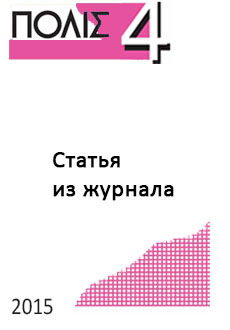Online shop of "Polis. Political Studies" Journal
We in the world, the world in us
Sakwa R. Back to the Wall: Myths and Mistakes that Made the Ukraine Crisis. – Polis. Political Studies. 2015. No 4. P. 46-63.
Free!
The fall of the Berlin Wall in November 1989 and the subsequent end of the Cold War had been attended by expectations of a new era of reconciliation and healing in Europe. Instead, on the 25th anniversary of the dismantling of the dividing line across Germany and Europe, Ukraine announced plans to build a new wall along its 2,295 kilometre-long border with Russia. This was an attempt physically to separate Ukraine from Russia, and reflected the deeper psychological and political gulf between the two countries. It also demonstrated that a new iron curtain threatened to divide Europe, no longer ‘from Stettin in the Baltic to Trieste in the Adriatic’, as Winston Churchill put it in his speech announcing the Cold War in Fulton, Missouri, on 5 March 1946, but from Narva on the Baltic to Mariupol on the Sea of Azov. Defenders of the new wall argue that this one is different, designed no longer to oppress people within its confines, but like the Great Wall of China, to keep the barbarians out; or like the Separation Wall in Palestine, to defend civilians. Some 274 people died along the Berlin Wall between its construction in August 1961 to its dismantling in November 1989, whereas according to the UN over 6,000 had died in Ukraine in the year after the beginning of armed conflict in April 2014 died. Walls and war have returned to the continent.
 English
English Русский
Русский

Reviews
There are no reviews yet.